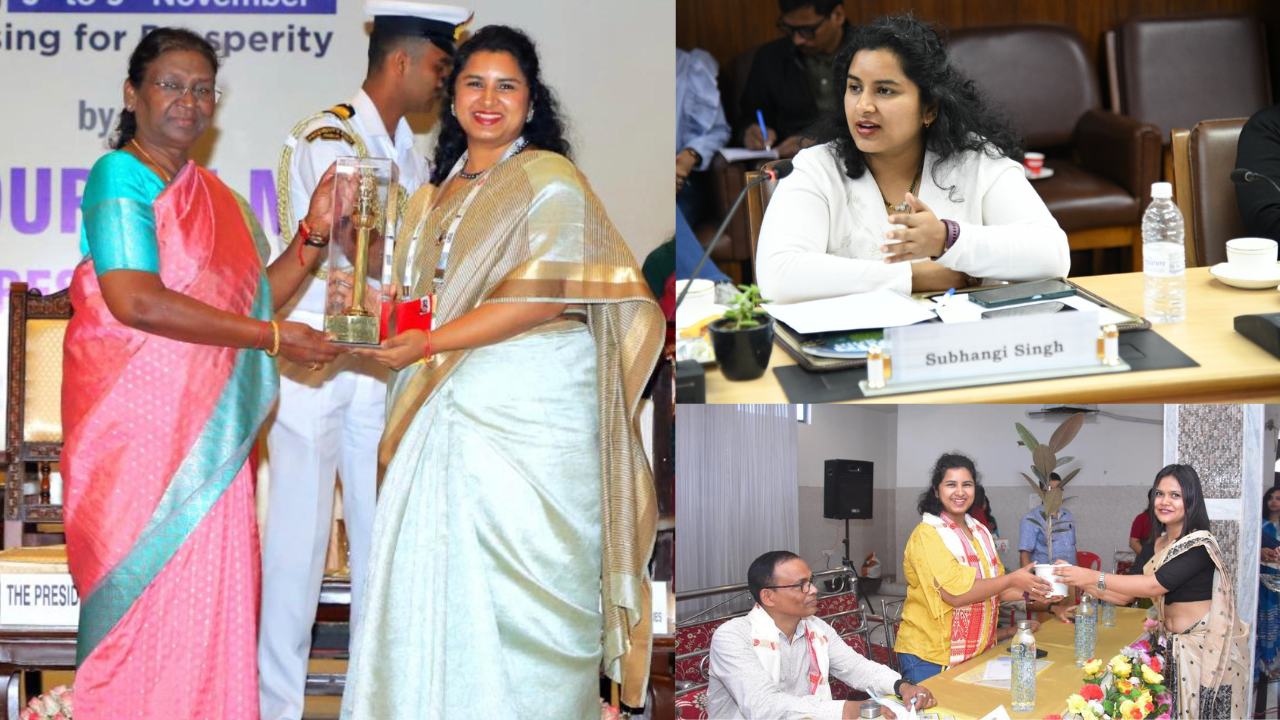
Architect Shubhangi Singh’s life appeared fulfilling. She had a stable income and a successful career with clients across India and European nations. But something was amiss. She wanted something bigger. This realization fueled her spirit for entrepreneurship, leading her to establish a millet business in 2018.
“Since childhood, I was fascinated by business models which had a meaning,” says Shubhangi. The idea for her venture sparked when one day, her mother fell ill. It was then, that she decided to leap. Surprisingly, she found a similar lifestyle imbalance in other Indian households, too. The same compelled her to start a business to provide healthier alternatives for wheat and rice. She founded her startup ‘Golden Millets’.
Striving for the Best
While weighing the nitty-gritty of millets, Shubhangi found out that nearly three decades ago, there were fewer diabetic Indians. Next, she discovered that this shift from millets to wheat, rice, and maida (white flour) contributed to the rise in the number of patients suffering from a range of lifestyle diseases such as obesity and diabetes. But the most challenging task for her was to make these millets palatable for the current generation.
Overcoming the Challenges
During the coronavirus, as the populace’s focus shifted toward better health, it looked like a golden time for Shubhangi’s entrepreneurial career. “It was a time when primary millet products did not enthuse the customers,” Shubhangi says. This led her to widen her horizons and learn about her target audience. Considering all these aspects, she made nearly 120 products from millets including ladoos and namkeen. “It was a strenuous process as it took me 3-4 months to understand each variety of millet,” Shubhangi expressed. Her research on millets led her to institutions such as the Indian Institute of Millets Research (IIMR), CSIR−Central Food Technological Research Institute (CFTRI), and many others.
Besides, the ‘farm-to-plate’ model of business offered her a supply chain problem which was later resolved with the help of Farmer Producer Companies, and NGOs.
Coupling Farmers’ Lives with Sustainability
Before Shubhangi’s venture, most farmers considered millets to be less profitable. “We solved this issue by making them aware. Interestingly, millets are the most sustainable crops because they require less water, almost no crop protection, and can be cultivated in the period that lies between paddy cultivation and wheat sowing,” she says. Now, around 30,000 farmers are registered with her company, across northern and northeastern parts of India such as Rajasthan, Punjab, Assam, and many others.
At present, her profits have gone through the roof, giving her a revenue of Rs 2 crore as of November 2023. She also took this as a challenge to solve storage problems in rural areas. Notably, hers was one of the millet startups in the nation to win the 2023 ‘Startup Grand Challenge’ conferred by the President of India Droupadi Murmu. “I am very happy and proud that my team could strive to establish the once-lost reputation of the golden foodgrain– millets,” she says.
The Way Forward
In Shubhangi’s opinion, India will soon not only bring the glory of millets back but will also make a name for itself in the food industry in the next 5-6 years. If there is more funding from the government and investors, her millet business too can reach a much larger revenue. Her dream is to see every Indian household have at least one meal that comprises millets, every day.
















